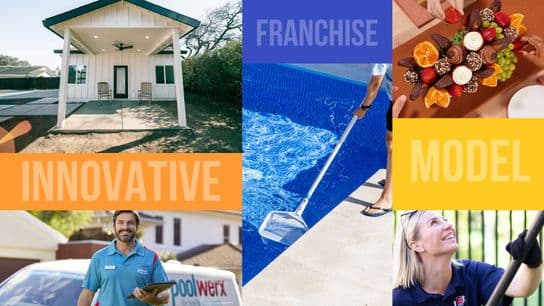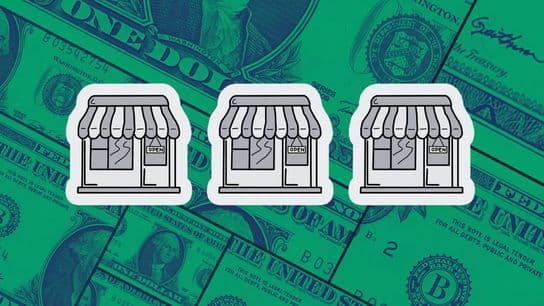What Montana's Economic Outlook Means for Franchisors
If you’re a franchisor looking to develop your business in Montana, you’ll want to consider the state’s policy variables and growth rates when scaling your plans.
This month, ALEC-Laffer published their annual Economic Competitiveness Rankings, which forecasts a state’s current standing within 15 state policy variables. The report features two different rankings: Economic Outlook — a forecast based on a state’s current standing in 15 state policy variables — and Economic Performance — a retrospective measure based on a state’s performance over a 10-year period from 2008 until 2018. For the state of Montana, these rankings reveal a lot about where the state economy is going and where there is opportunity for their economy to grow.
- 2020 Outlook Ranking: 33
- 2008–2018 Performance Ranking: 15
The State
Prior to the COVID-19 pandemic, Montana had excellent employment rates and was enjoying its third fiscal year of healthy revenue growth, according to the Bureau of Business and Economic Research (BBER). Since then, the decline has been swift and dramatic. The BBER predicts that by the end of 2020, Montana’s economy will suffer an average employment decline of over 50,000 jobs — a decline of 7.3 percent — and personal income will be $3.9 billion lower than initially projected.
Historically, Montana’s economy has been reliant on agriculture and the forestry industry — both of which have been significantly impacted by the COVID-19. Fortunately for Montana, many of the crops that the state produces are ones that are generally consumed by humans: lentils, garbanzo beans and peas. According to one agricultural economist, 56% of Montana consumers’ food expenses are typically spent in restaurants, but as a result of the pandemic people are spending about 10 percent more of their food dollars in grocery stores instead — a welcome boost for the state’s agricultural economy during this time. As things begin to reopen and money spent on food redistributes itself between restaurants and stores, Montana’s economy may eventually stabilize.
Making Sense of the Data
What does this mean for Montana’s economy? To start with the Economic Performance report, the index shows that within the past ten years, Montana has been outperformed by 32 other state economies. The performance index is based broadly on a state’s performance within State Gross Domestic Product, Absolute Domestic Migration and Non-Farm Payroll Employment. The category that most negatively impacted the state’s economic performance was its State Gross Domestic Product. Montana had middle-of-the-road growth in this category at 36.5 percent, leaving them with a ranking of 24th among the states.
The Economic Outlook tells another story about the Montana economy. The ranking is based on a state’s current standing in 15 state policy variables. Each of these factors, ranging from sales tax burden to state minimum wage, are influenced directly by state lawmakers through the legislative process. In this ranking, Montana appears at No. 33 — the highest it has been ranked since 2013. Although it’s ranked near the middle of the pack, the Treasure State’s economy shows every sign of future growth.
The report indicates that, generally speaking, states that spend and tax less experience higher growth rates than states that spend and tax more. While this is an important finding for entrepreneurs looking to start their own business, it shouldn’t discourage them from investing in the franchise of their dreams if they're in a market with a slower growth rate. For states like Montana, this presents an opportunity to grow. The dollar is projected to stretch further in Montana than in most other states, and, in a time when the state’s economy is struggling due to the pandemic, there will be people in search of new career opportunities.
When it comes to deciding where franchisors should develop their brand, it’s always important to look at the complete picture of what the region has to offer. Although in the past Montana has lagged behind in performance, its potential for growth is improving exponentially and hopefully the state will continue on this trend after the pandemic.
Franchise Growth Plans
So what should franchisors do with this information? Though most franchisors take a shotgun approach — meaning wherever a prospect franchisee inquires, the franchisor will typically entertain that marketplace — the strategy of looking at these overall policies can help them scale their business at a more efficient rate. With that said, the findings within the report should not be the deciding measure for franchisors, but they should play a role in the decision.
Brass Tap*
- Current units in state: 1
- Growth capacity in state: 5+
- Total jobs created at max growth capacity: 175
Jamie Cecil, vice president of franchise development for craft beer franchise The Brass Tap, said the brand’s growth potential is significant and sees Montana as a promising state to target.
“We’re thrilled about the success of the brand and see tremendous potential for development,” said Cecil.
Sylvan Learning*
- Current units in state: 4
- Growth capacity in state: 2
- Total jobs created at max growth capacity: 24
John McAuliffe, CEO of supplemental education franchise Sylvan Learning, seconded the notion of Montana’s potential. According to the early education franchisor, the state has opportunities for businesses that currently fit the needs of the population.
“We choose areas to focus our franchise development efforts based on demographic data we receive from our mapping-system provider,” said McAuliffe. “We look for areas with a high concentration of families with school-age children whose annual income is $50k or above. We also look at some other factors such as shopping centers (where tutoring centers can be located), schools and competition.”
BeBalanced
- Current units in state: 0
- Growth capacity in state: 5+
- Total jobs created at max growth capacity: 50
David Cutillo, CEO of hormone-based weight management franchise BeBalanced, notes that generating brand awareness is the key component when it comes to franchising his brand. He notes that with enough targeted marketing and emphasis on the state, Montana will poised for growth.
“Our growth strategy has always been very deliberate — very strategic,” Cutillo said. “We’ve been careful to make sure every aspect of our operations has been perfected and that we have strong brand awareness before breaking into a new market. Right now, everything is aligned for us, and we’re excited to take full advantage.”
Franchise Brands Headquartered in Montana
*This brand is a paid partner of 1851 Franchise. For more information on paid partnerships please click here.









